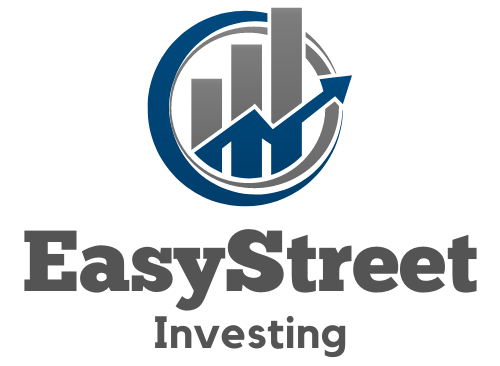Venturing into the world of commodities can be a gold mine for savvy investors seeking high-yield returns. Commodity funds offer a unique opportunity to tap into markets that react distinctly from stocks and bonds. If you’re on the hunt for investment avenues with potential for significant growth, understanding how these funds operate could be your ticket to striking it rich. This article peels back the curtain on commodity funds, revealing how they can diversify portfolios and hedge against inflation.
As we dig deeper, you’ll discover the nuts and bolts of investing in natural resources like oil, gold, and agriculture. We’ll explore strategies to maximize returns while keeping risks at bay. By the time you’re done reading, you’ll have a roadmap to navigate the terrain of high-yield commodity investments. So grab your gear – let’s unearth the secrets to adding glittering prospects to your financial portfolio without getting lost in industry jargon.
Important Highlights
1. Investing in commodity funds can be an effective strategy for portfolio diversification, as they often move inversely to stocks and bonds. This means when the stock market dips, commodities can remain stable or even appreciate, providing a cushion against volatility. Careful selection of commodity funds can lead to high-yield opportunities, especially in markets driven by supply and demand dynamics.
2. Commodities like precious metals, oil, and agricultural products are influenced by geopolitical events, weather patterns, and economic cycles. Therefore, staying informed about global events is crucial for investors looking to capitalize on the fluctuating prices within commodity markets. For example, political instability in oil-producing regions can lead to price spikes that benefit certain commodity funds.
3. Utilizing exchange-traded funds (ETFs) is a popular way to gain exposure to commodities without directly purchasing physical assets. ETFs offer liquidity and ease of trading similar to stocks while allowing investors to invest in a basket of commodities or specific sectors within the commodity market.
4. The performance of commodity funds is closely tied to the strength of the underlying commodities they represent. Investors should engage in thorough research or consult financial experts to understand market trends and select funds with strong potential for growth. Detailed analysis can uncover underpriced assets poised for high yields.
5. Leveraging futures contracts within commodity funds allows investors to speculate on the future prices of commodities. This approach requires an understanding of futures markets and carries higher risk but also presents opportunities for significant returns if market predictions prove accurate.
Understanding Commodity Funds and Their Yields
Focusing on commodity funds, these investment vehicles pool resources to invest in physical commodities or futures contracts. Unlike traditional equity or bond investments, they offer exposure to diverse markets, such as precious metals, energy, and agricultural products. The yields from commodity funds can significantly enhance a portfolio’s income stream, particularly during periods when traditional assets underperform.
The Role of Diversification in Commodity Investment
Diversification is a core strategy for managing risk and seeking returns. By including commodity funds in their portfolio, investors tap into opportunities that are often uncorrelated with stock and bond markets. This strategic allocation often leads to reduced volatility and the potential for higher yield, especially when certain commodities experience price spikes due to supply disruptions or increased demand.
Assessing Risk vs. Reward in High-Yield Commodities
Risk assessment is crucial when targeting high-yield opportunities in commodities. While some commodities may offer substantial yields, they also come with heightened risks due to market volatility, geopolitical issues, and environmental factors. Investors must weigh these risks against potential rewards by analyzing historical performance data and market trends.
Selecting the Right Commodity Fund for Yield Maximization
To maximize yields, selecting the right commodity fund requires thorough research. Look for funds that have a strong track record of performance and are managed by experienced professionals who understand the complexities of the commodities market.
Tactical Strategies in Commodity Investing
Tactical asset allocation involves adjusting investment positions based on short-term market forecast evaluations. Within commodity investing, this means capitalizing on short-term trends or shifts in demand-supply dynamics to capture high yields. However, such strategies require active management and an intimate knowledge of market indicators.
Futures Contracts: A Pathway to Higher Yields?
Futures contracts can lead to higher yields within commodity funds. These contracts allow investors to speculate on the future price of commodities, presenting opportunities for significant gains if predictions are accurate. Still, it’s imperative to understand the associated leverage risks which could amplify losses just as it magnifies gains.
Hedging Strategies Using Commodity Funds
Hedging is a technique used to mitigate risk in an investment portfolio. Commodity funds can serve as effective hedges against inflation or currency devaluation since commodity prices often increase when traditional currencies weaken. This defensive strategy can result in yield preservation over time.
Evaluating Commodity Fund Performance Metrics
In evaluating commodity funds’ performance metrics like Sharpe ratio and Sortino ratio provide insights into risk-adjusted returns. These metrics help determine whether the higher yield potential compensates adequately for the additional risks taken on by investing in commodities.
Impact of Economic Cycles on Commodity Fund Yields
Economic cycles greatly influence commodity prices and consequently fund yields. During expansion phases, demand for commodities typically increases, potentially leading to higher yields for investors. Conversely, during downturns, commodity prices may decline but select commodities could still offer attractive yields depending on their specific market dynamics.
Leveraging Professional Expertise in Commodity Investments
Leveraging professional expertise through actively managed commodity funds can guide investors towards high-yield opportunities while navigating complex market conditions. Experienced fund managers utilize deep market analysis and advanced trading strategies to seek out the best yielding prospects.
Sustainable and Ethical Considerations in Commodity Investing
In recent years, there has been a growing emphasis on sustainable and ethical investing practices. Investors interested in high-yield opportunities within commodity funds should also consider environmental, social, and governance (ESG) factors that could affect long-term profitability and stability of their investments.
- Research various types of commodity funds available for investment.
- Analyze current market trends influencing commodity prices.
- Examine historical performance data of specific commodities for informed decision-making.
- Evaluate the risk-adjusted return metrics before investing in high-yield opportunities.
- Consider tactical asset allocation strategies for optimizing portfolio performance.
- Utilize hedging techniques where appropriate to protect against downside risk.
- Prioritize funds with transparent management practices and good track records.
- Familiarize yourself with futures contracts if considering a more aggressive yield-seeking approach.
- Stay updated with global economic developments that can impact commodity pricing.
- Incorporate ESG considerations into your investment choices within commodity markets.
Frequently Asked Questions
What are Commodity Funds?
Commodity funds are investment vehicles that pool money to invest in physical commodities or commodity-related securities. They can include a variety of assets like metals, energy, and agricultural products.
Why Seek High-Yield Opportunities in Commodity Funds?
Investors often look for high-yield opportunities in commodity funds to diversify their portfolios and hedge against inflation. Commodities can offer substantial returns when markets are favorable.
How Do Commodity Funds Generate Yield?
Yields in commodity funds come from price changes in the commodities they hold, dividends from related securities, and interest on cash positions.
What Risks Come with Investing in Commodity Funds?
Risks include market volatility, regulatory changes, and impacts from global events on commodity prices. It’s essential to understand these before investing.
Are Commodity Funds Suitable for All Investors?
No, they’re best suited for investors who can bear higher risk levels and have a good understanding of the commodities market.
Can You Invest in Commodity Funds Through Retirement Accounts?
Yes, some retirement accounts allow investments in commodity funds, but check with your account provider for any restrictions.
How Does Diversification Work Within Commodity Funds?
Diversification spreads risk by investing across various commodities or related assets to mitigate potential losses if one area underperforms.
What Is the Impact of Economic Cycles on Commodity Funds?
Economic cycles can greatly influence commodity prices—and thereby the performance of commodity funds—due to changing demand and supply conditions.
How Important is Research Before Investing in High-Yield Commodity Funds?
Extensive research is crucial to understand the factors that affect commodity prices and fund performance. It helps investors make informed decisions.
Where Can You Find Reliable Information on Commodity Funds?
Sources include financial news outlets, market analysts’ reports, and data from fund managers. Always verify information before acting on it.
Closing Insights on Maximizing Returns with Commodities
In conclusion, while the pursuit of high yields within commodity funds holds the allure of substantial returns, it is accompanied by a distinct set of risks and complexities. A strategic approach—grounded in thorough research, a clear understanding of economic trends, and a commitment to portfolio diversification—is key to navigating this dynamic investment space effectively. Factors such as market timing, geopolitical events, and currency fluctuations must be keenly observed as they can directly impact commodity prices and fund performance. By maintaining an informed perspective and exercising due diligence, investors are better positioned to identify valuable opportunities within the realm of high-yield commodities.
The essence of investing wisely in high-yield opportunities within commodity funds lies not just in chasing returns but also in managing risk judiciously. A balanced view that considers both potential gains and inherent uncertainties will serve as a guiding beacon for those looking to enhance their investment portfolios through commodities. As always, aligning investment choices with one’s financial goals and risk appetite remains paramount. Embrace continuous learning as markets evolve; only then can one truly capitalize on the high-yield prospects that commodity funds may offer.

